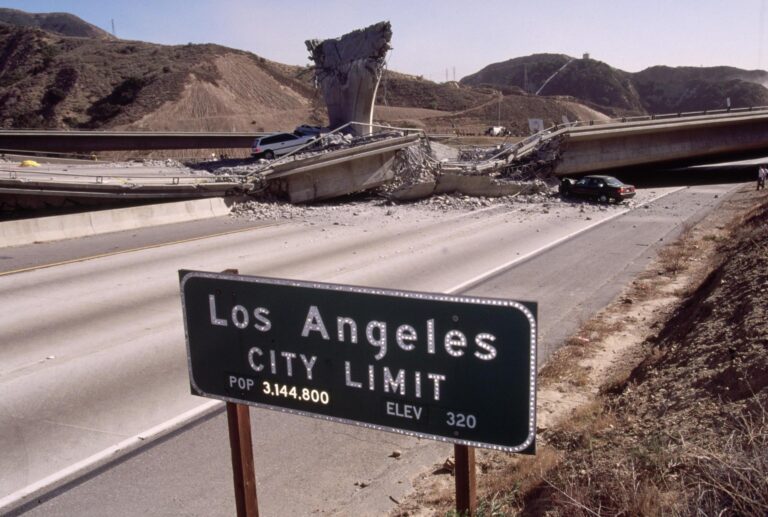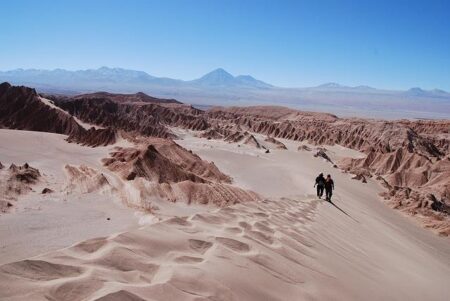Los Angeles at a Crossroads: Overcoming Denial to Face Earthquake and Fire Threats
Persistent Natural Hazards Challenging Los Angeles’ Safety
Los Angeles, a city renowned for its dynamic spirit and innovation, remains under constant threat from natural disasters, particularly earthquakes and wildfires. Situated along the infamous San Andreas Fault, the city is inevitably destined to experience a major seismic event. Simultaneously occurring, the region’s dry climate and seasonal Santa Ana winds create ideal conditions for wildfires that can rapidly engulf entire communities. Despite these well-documented dangers and historical precedents, a significant portion of residents and decision-makers continue to underestimate or dismiss the severity of these risks.
This widespread underestimation obstructs critical preparedness initiatives and delays essential upgrades to safety infrastructure. Experts advocate for a multi-faceted approach to disaster readiness, emphasizing:
- Modernizing construction standards to endure intense earthquakes
- Implementing expanded controlled burns and vegetation clearance to mitigate wildfire fuel
- Deploying advanced early detection and alert systems for both seismic and fire emergencies
- Launching targeted educational outreach programs, especially in high-risk neighborhoods
Recent data from the California Resilience Institute reveals stark contrasts in readiness and risk levels across Los Angeles neighborhoods, underscoring the uneven distribution of vulnerability:
| Area | Earthquake Preparedness | Wildfire Threat |
|---|---|---|
| Silver Lake | Moderate | High |
| San Fernando Valley | Low | Moderate |
| Hollywood Hills | High | Extreme |
| Downtown Los Angeles | Moderate | Low |
The Hidden Danger: Complacency’s Toll on Disaster Readiness
One of the most formidable obstacles to effective disaster management in Los Angeles is the pervasive attitude that preparedness is someone else’s duty. This mindset breeds complacency, which in turn delays vital investments in infrastructure resilience, emergency training, and early warning technologies. The repercussions are severe: increased casualties, prolonged recovery periods, and economic losses that could have been mitigated through foresight and action.
Los Angeles’ unique challenges—aging buildings, densely populated neighborhoods, and proximity to wildland-urban interfaces—demand unwavering vigilance. Yet, denial continues to impede progress.
Complacency intensifies several critical risks, including:
- Sluggish emergency response due to insufficient funding for fire departments and first responders
- Outdated construction regulations that fail to protect structures from collapse
- Low public awareness regarding evacuation procedures and safety measures
| Preparedness Initiative | Current Condition | Potential Benefit |
|---|---|---|
| Seismic Retrofitting | Insufficiently funded | Decreased risk of structural failure |
| Community Emergency Drills | Rarely conducted | More efficient and safer evacuations |
| Wildfire Mitigation Programs | Inconsistent implementation | Reduced wildfire spread |
Reinforcing Los Angeles’ Infrastructure Against Natural Disasters
Addressing Los Angeles’ susceptibility to earthquakes and fires requires a robust commitment to strengthening its built surroundings. Recent engineering research supports retrofitting older structures with cutting-edge materials designed to absorb seismic shocks and prevent catastrophic failures. This effort extends beyond high-rise buildings to include homes, schools, and healthcare facilities.
Innovations such as base isolation systems and cross-laminated timber construction are gaining traction, offering enhanced protection against tremors and subsequent fires. Concurrently, city planners and engineers are prioritizing upgrades to critical infrastructure systems, focusing on areas where improvements yield the greatest resilience.
- Flexible water mains capable of withstanding ground displacement without breaking
- Relocation and fortification of emergency operation centers away from zones with the highest hazard potential
- Modernization of electrical substations to ensure reliable power during emergencies
| Infrastructure Component | Current Vulnerability | Upgrade Plan | Anticipated Advantage |
|---|---|---|---|
| Water Supply Lines | 57% prone to rupture | Install flexible piping systems | Continuous water availability during quakes |
| Power Grid | Obsolete transformers | Integrate smart grid technologies | Accelerated restoration of electricity |
| Emergency Facilities | Situated in high-risk areas | Move to safer locations | Enhanced emergency response capability |
Empowering Communities and Enacting Policy for Greater Resilience
True resilience against earthquakes and wildfires begins with an informed and engaged public. Overcoming denial requires widespread education campaigns that provide practical guidance on safety protocols and emergency preparedness. Transparent dialog from city officials fosters trust and encourages proactive behavior, ensuring communities are better equipped to respond when disaster strikes.
Equally vital are policy reforms that reinforce the city’s defenses. Leaders must champion initiatives that strengthen infrastructure, enforce rigorous building standards, and promote responsible land use planning. The following policy priorities are essential to bolstering Los Angeles’ disaster resilience:
| Policy Focus | Strategic Actions | Projected Results |
|---|---|---|
| Infrastructure Enhancement | Retrofitting bridges and public facilities | Lowered risk of structural failure |
| Building Regulations | Mandating use of fire-resistant construction materials | Reduced wildfire damage |
| Land Progress Controls | Restricting construction in high-risk zones | Decreased exposure to hazards |
| Emergency Funding | Allocating resources for rapid disaster response | Quicker recovery and reduced losses |
By cultivating a culture of preparedness and implementing forward-thinking policies, Los Angeles can significantly diminish the devastating effects of natural disasters. Immediate and decisive action is imperative—prolonging denial only intensifies the risks and consequences for all residents.
Conclusion: From Vulnerability to Strength
As Los Angeles continues to expand and transform, the looming threats of earthquakes and wildfires remain undeniable. However, the greatest peril lies not in the forces of nature themselves, but in the collective reluctance to fully confront and prepare for these dangers. Only through honest acknowledgment and proactive strategies can the city protect its people and infrastructure. Embracing this challenge will enable Los Angeles to convert its vulnerabilities into enduring resilience.




